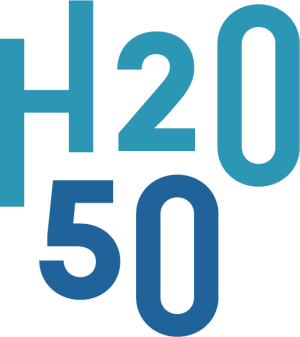“Water is the most extraordinary substance. Practically all its properties are anomalous, which enabled life to use it as building material for its machinery. Life is water dancing to the tune of solids.”
- Albert Szent-Gyorgyi
Water carriers in motion - about the 4th type of properties of water
In modern society, but also long before, water was primarily studied from the perspective of what we call the first 3 properties of water. These are the physical properties, such as electrical conductivity, colour, transparency and temperature. Then come its chemical properties, which are mainly determined by substances present in the water. And thirdly, the biological properties of bacteria, algae, water fleas, macrofauna, plants and fish present. An impressive amount of research has already been conducted into these properties. And despite the fact that, as a result, we know that the properties of water are often unique, we still do not know much about this substance that is essential for life on earth.
Of all known fluids, wrote chemist Felix Franks, ‘water is probably the most studied and least understood’. There is an excellent liquid theory that can explain how liquids will behave surprisingly accurately. But if you want to understand water, this theory is of very limited use. Every time you drop an ice cube in a drink, the strangeness of water is clear to see. You see a solid substance floating on its liquid form. When other liquids cool down and become solid, they shrink. That is not the case for ice, it floats because it does something odd when it freezes. It expands. At the basis of this property lies the polar character of water molecules that allow hydrogen bonds to form, thereby creating vast three-dimensional networks of water. These networks are not static, rather the connections between them are broken and re-created in a trillionth of a second.
These weak connections and their ability to bond and separate quickly are (i) at the basis of many important biological processes that take place within cells, (ii) why water is liquid at the prevailing temperature and pressure on earth, but (iii) also why ice has a lower density than water. Another water anomaly is, for example, the Mpemba effect. This is the phenomenon where hot water freezes faster than cold water in certain circumstances. There has as yet been no definitive explanation of why the Mpemba effect occurs. To date, a list of more than 70 water anomalies has been identified.
The more research we do into water, the stranger it becomes and the more questions it raises: “Is there information hidden in these intrinsic properties of water, or can we add information to water? Regular water management still focuses to a very large extent on the standardisation of the first 3 properties of water. For the time being, there is only a limited focus on the intrinsic properties of water, which we refer to as the 4th property here.
In recent years, however, the trend has been ever growing interest in the more unique properties of water. Not In the least because we see that for the challenges we face when it comes to our water systems, the standard knowledge and methods no longer appear sufficient.
We are setting up this project as a plug-in to research sewage water as a ‘mirror’ for the COVID crisis. We are broadening the ‘measurements’ in the project from a perspective of deeper reflection on the 4th property of water. Where possible, we are connecting the reflection with tangible traces that help interpret the integration of the 4 properties of water, and the development of a more holistic view on water. Can we imitate natural water flows to revitalise sewage water or stored water for irrigation? Can we also give water ‘information’, or just extract information from water?
As such, we intend to create a ‘flow’ via the plug-in: How and where and with whom can we find and interpret the knowledge that is there? What can we do with it? In other words: can we identify the most important and unique properties of water and investigate how these can be used in diverse fields where water is active and essential?
Download all catalysts
Disclaimer
The Flemish Environment Agency (VMM), De Vlaamse Waterweg, De Watergroep, Aquafin, the Flemish Department of Environment, Farys, Pidpa, water-link and VITO - Vlakwa have created the space for a group of fresh thinkers to develop a systemic view of water, and to challenge the water sector to shape a futureproof water system. The formulated ideas are not those of the initiators, nor do they represent their stands. However, they are considered valuable as an inspiration for the future of our water system.
This work is licensed under a Creative Commons Attribution 4.0 International License.
